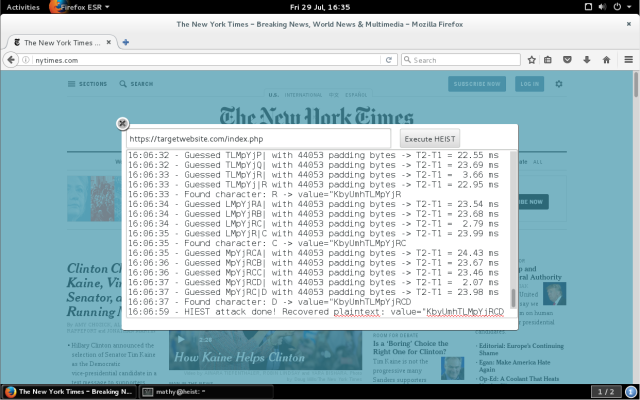
Enlarge / A demo planned for Wednesday will show how an ad hosted on nytimes.com could attack other HTTPS-protected sites. (credit: Vanhoef, Van Goethem)
The HTTPS cryptographic scheme protecting millions of websites is vulnerable to a newly revived attack that exposes encrypted e-mail addresses, social security numbers, and other sensitive data even when attackers don't have the ability to monitor a targeted end user's Internet connection.
The exploit is notable because it doesn't require a man-in-the-middle position. Instead, an end user need only encounter an innocuous-looking JavaScript file hidden in an Web advertisement or hosted directly on a webpage. The malicious code can then query a variety of pages protected by the secure sockets layer or transport layer security protocols and measure the precise file sizes of the encrypted data they transmit. As its name suggests, the HEIST technique—short for HTTP Encrypted Information can be Stolen Through TCP-Windows—works by exploiting the way HTTPS responses are delivered over the transmission control protocol, one of the Internet's most basic building blocks.
Once attackers know the size of an encrypted response, they are free to use one of two previously devised exploits to ferret out the plaintext contained inside it. Both the BREACH and the CRIME exploits are able to decrypt payloads by manipulating the file compression that sites use to make pages load more quickly. HEIST will be demonstrated for the first time on Wednesday at the Black Hat security conference in Las Vegas.